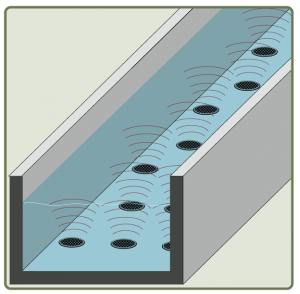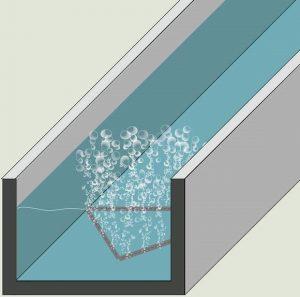(November 20, 2018 – Ann Arbor, MI) — Today, the U.S. Army Corps of Engineers released its final draft plan to keep Asian carp out of the Great Lakes. The draft chief’s report of the Brandon Road Lock and Dam includes both structural and nonstructural measures including an engineered lock fitted with an electric barrier, a bubble barrier, an acoustic barrier, and a flushing lock to stop aquatic invasive species like Asian carp, while maintaining navigation for shipping.
The Brandon Road Lock and Dam is located just south of Chicago and is a critical chokepoint to help stop Asian carp from continuing to swim closer to Lake Michigan. The estimated cost of the project is $777.8 million, up from an earlier estimate of $275 million. A previous draft of the plan included water jets in place of the bubble barrier.
A summary of the final plan is available here: https://www.mvr.usace.army.mil/Missions/Environmental-Protection-and-Restoration/GLMRIS-BrandonRoad/.
Asian carp include species of bighead, silver, black, and grass carp. After escaping from southern United States aquaculture facilities, they have spread rapidly and have reduced native fish populations in waters connected to the Mississippi River watershed, which connects to the Great Lakes watershed through the Chicago Area Wa terway System. Asian carp pose a significant threat to our economy, outdoor heritage, and way of life. In addition, the invasive species is a clear and present danger to the Great Lakes sport-fishery, which is estimated to generate at least $7 billion each year in economic activity.
terway System. Asian carp pose a significant threat to our economy, outdoor heritage, and way of life. In addition, the invasive species is a clear and present danger to the Great Lakes sport-fishery, which is estimated to generate at least $7 billion each year in economic activity.
Marc Smith, director of conservation partnerships for the National Wildlife Federation Great Lakes Regional Center, issued the following statement in response to the release of the updated plan:
“Across the country, Asian carp are undermining our nation’s fisheries and threaten the Great Lakes $7 billion annual sport-fishery. The Army Corps of Engineers plan to rebuild the Brandon Road Lock and Dam south of Chicago is our opportunity to put stronger measures in place to keep Asian carp out of the Great Lakes.
The plan includes a gauntlet of technologies to prevent Asian carp from moving past the lock, while maintaining navigation for shipping. The investment in this project pales in comparison to the economic risk if Asian carp invade the Great Lakes. We intend to review the updates to the plan in detail and offer official public comment later, but at first glance this looks like the plan we need to protect our waters, our fisheries, our sport-fishing economy and our way of life.”
Nonstructural Control Measures
Nonstructural controls do not require the construction of a permanent feature in the waterway, while structural measures do.
Education and Outreach: Educating the public on ways to avoid spreading all life stages of ANS from one waterbody to another.
Integrated Pest Management: Integrated Pest Management is a series of pest management evaluations, decisions and controls. The overall strategy is to use an Integrated Pest Management approach by combining the tools, knowledge, monitoring data and information available to detect, aggregate, remove, control and exclude ANS.
Manual or Mechanical Removal: For adult life stages, controlled harvest and overfishing remove ANS fish species from the waterway to reduce abundance. Current methods are ineffective for A. lacustre (hitchhiker) and for harvesting the eggs, juvenile and larval life stages of Bighead Carp (H. nobilis) and Silver Carp (H. molitrix).
Nonstructural Monitoring: Nonstructural monitoring uses various tools to identify the location and abundance of ANS. Monitoring includes but is not limited to electrofishing, netting and telemetry.
Piscicides: Application of a registered piscicide to eradicate ANS fish species, but generally not effective against fish eggs. In the state of Illinois, piscicides can only be received, possessed and applied by a State of Illinois, Division of Fisheries Biologist.
Research and Development: Investigations into ways to improve the effectiveness and development of additional tools and methods to prevent ANS from entering the Great Lakes Basin.
Structural Control Measures
Structural controls require the construction of a permanent feature in the waterway. Structural measures include:
Drew YoungeDyke – Senior Communications Coordinator
Great Lakes Regional Center
734-887-7119
Uniting all Americans to ensure wildlife thrive in a rapidly changing world






